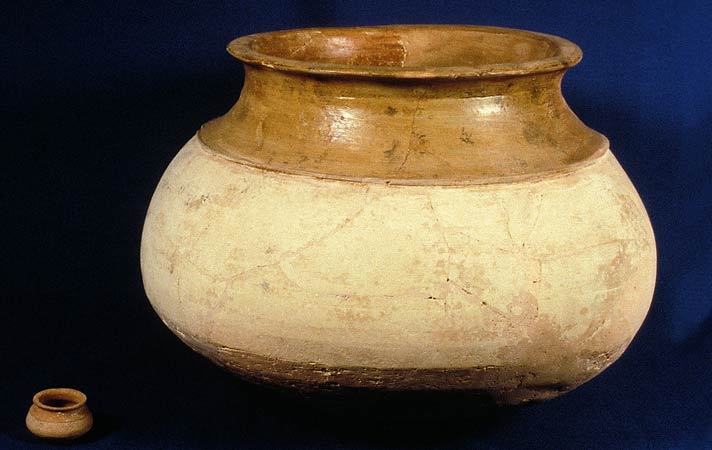
Indus cooking pot from Nausharo with similar toy pot ca. 2500 BCE.
I would like to know if the valley was green and fertile at that time... and if the cultivation of sugar cane, a highly aggressive culture, and the use of timber to construct led to environmental degradation of the area which then became dry and hostile.
Rita Wright
There is no evidence for the cultivation of sugar cane, as far as I know. The cultivation was primarily of those foods I listed in the first question. No one really has done a proper study of timber exploitation and the possibility of environmental degradation. Many have discussed this possibility because of the large number of baked brick, but the detailed study needed to “prove” it has not been done.
In my recent book, Chapter 2 I discuss the many different opinions about environmental changes and their causes. There are many different opinions about environmental change. At the end of that chapter I present evidence from my own research on a dried up river bed near Harappa. Research my team and I conducted indicates that there was a period that was drier than it had been previously and when there was a lower amount of river discharge, which would have made impacts on the flood waters on which they depended. I suggest there some ideas about how the Harappans reacted to that situation, coming out in the end with the idea that people at that time were very aware of the changes that were taking place and took positive action. At Harappa that meant that they were able to sustain their urban culture, though there were MAJOR changes, diminished populations, absence of the administrative technology (stamps seals, weights, etc.). All that needs to be worked out for other areas; to resolve the discrepancies in the opinions about climate change and different evidence when you look at the larger Indus territory, I suggested this question can only be resolved with the collection of LOCAL data for each region and then come together and discuss the larger territory.
